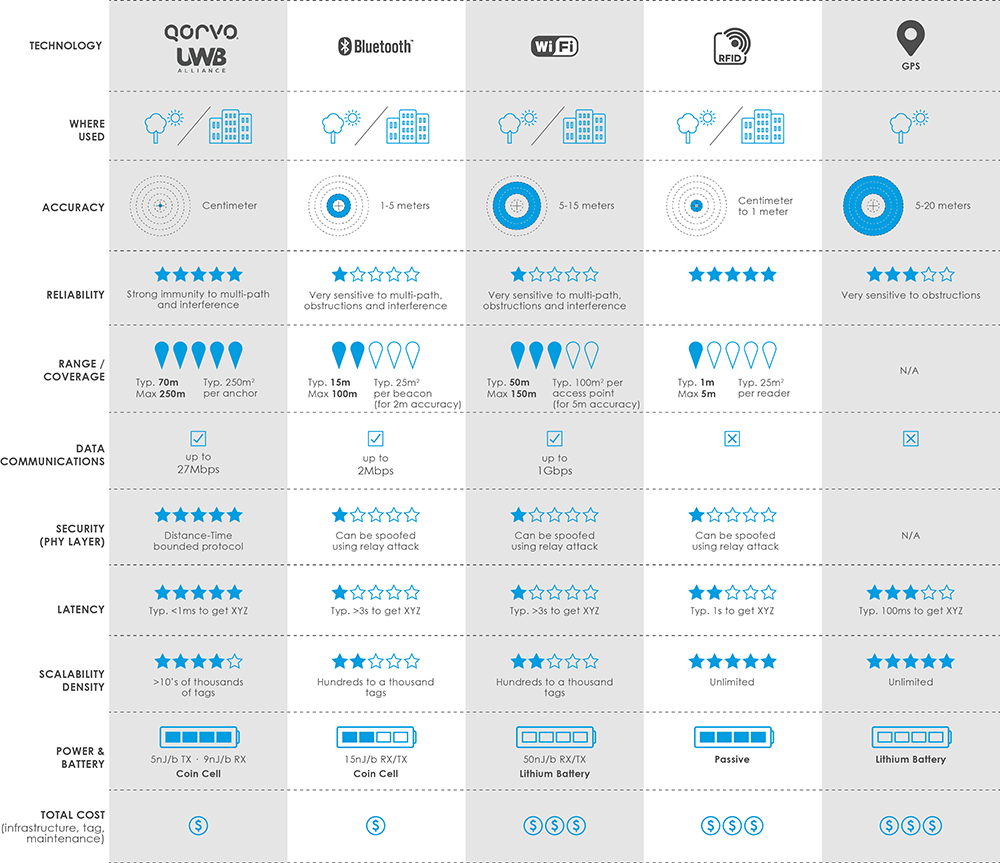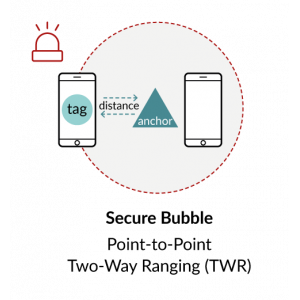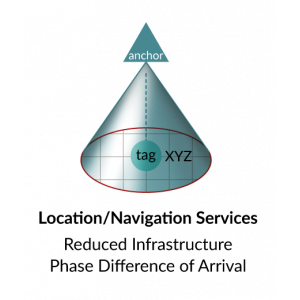Technology
Ultra-wideband (UWB) is a radio technology based on the IEEE 802.15.4a and 802.15.4z standards that can enable the very accurate measure of the Time of Flight of the radio signal, leading to centimeter accuracy distance/location measurement.
In addition to this unique capability, UWB offers data communication capability while using extremely little energy – enabling coin cell operation for years without needing to be recharged or replaced. By combining accurate location and communication, UWB also offers a new way of securely communicating over wireless, opening the door to new forms of secure transactions.
Why UWB is the Premier Location Technology
Unlike other technologies like Bluetooth or WiFi, which are being re-tooled for a new purpose, the physical properties of the UWB RF signal were specifically defined from the start to achieve real-time, ultra-accurate, ultra-reliable location and communication.
At Qorvo, we also wanted UWB technology to become ubiquitous, and we added low-power and low-cost to the definition of our UWB chips.

How UWB Works
UWB leverages Time of Flight (ToF), which is a method for measuring the distance between two radio transceivers by multiplying the Time of Flight of the signal by the speed of light. From this basic principle, UWB technology can be implemented in different ways based on the target applications needs: Time Difference of Arrival (TDoA), Two Way Ranging, or Phase Difference of Arrival (PDoA).
Time Difference of Arrival (TDoA) and Reverse TDoA
The TDoA method is very similar to GPS. Multiple reference points, called anchors, are deployed in a venue and are time synchronized. The mobile devices will beacon, and when an anchor receives the beacon signal it will timestamp it. The timestamps from multiple anchors are then sent back to a central location engine which will run multilateration algorithms based on Time Difference of Arrival of the beacons signals to compute the X, Y, Z of the mobile devices.
Advantages:
- Up to 7 years of battery life for the tag (CR2032 – 0.1Hz update rate)
- Very high density of devices – in the thousands
Disadvantages:
- Anchors need to be time synchronized
- More complex deployment
Target Applications:
- Find family, friends & colleagues in crowded venues (i.e., stadiums, malls, trade shows)
- Track employees in large warehouses
- Track kids in school (i.e., to ensure they don't leave campus before the school day ends)

Two-Way Ranging (TWR)
The TWR method relies on two-way communication between two devices. As they communicate, the devices also measure the Time of Flight of the UWB RF signal between them. By multiplying the round trip time of the signal by the speed of light, and then dividing by 2, you can derive the actual distance between the two devices. If you apply the TWR scheme between two devices, you will get the distance (D) between the two devices. Based on the TWR scheme, you can also implement 2D or even 3D location by measuring the distance between your mobile tags and fixed beacons – this is called triangulation.
Advantages:
- System synchronization is not required
- Easy deployment
- Two-way communication enables downlink data and control
Disadvantages:
- Higher power consumption as devices use two-way communication – months to a year of battery life (use-case dependent)
- Limited number of mobile devices (in the hundreds)
Target Applications:
- Find lost items in a home
- Lock and unlock your PC based upon your proximity
- Point at and control IoT devices with a smart remote or your phone

Phase Difference of Arrival (PDoA)
The PDoA method consists of combining the TWR scheme that delivers the distance between two devices with the measure of the bearing between the two devices. The combination of distance and bearing allows the calculation of the relative position of two devices without any other infrastructure. To do so, one of the devices carries two antennas and is able to measure the Phase Difference of Arrival of the RF signal.
Advantages:
- Reduced infrastructure location scheme
- Relative positioning between two devices
Disadvantages:
- Location error is no longer constant, it is a function of the distance between the 2 devices
Target Applications:
- Customize smart home settings (audio, video, lighting, etc.) based upon who is present in the area
- Secure access to your home or office building without using a key or touch screen
- Track people or items outside of a pre-defined area

The IEEE Standard
The IEEE 802.15.4a is an international standard defining the IR-UWB physical layer. This standard was designed to deliver very high accuracy location while providing simultaneous two-way communication – up to 27Mbps – to collect sensor data and control actuators. This standard was initiated in 2005 and ratified in 2007 before being fully integrated in 2011. In 2018 the standard was re-opened in the form of 802.15.4z to add further security to the physical layer as UWB is now expected to be used as a secure transaction wireless technology by the automotive and mobile industries.
Decawave CTO and co-founder Michael McLaughlin was part of the team of engineers who created the standard. This early team had the vision to make every connected object "location aware," as they believed that "answering the where" would add huge value to the success of applications like the Internet of Things (IoT).
FiRa Consortium
FiRa stands for fine ranging, a term that highlights UWB technology’s unique ability to deliver unprecedented accuracy and security when measuring distance to a target or determining position. As an industry consortium, FiRa believes UWB technology will transform the way people experience connectivity and is committed to the widespread adoption of UWB applications. The FiRa Consortium is envisioning many use cases including hands-free access control, indoor location, and navigation, as well as peer-to-peer applications.

Car Connectivity Consortium
The CCC is a cross-industry organization advancing global technologies for smartphone-to-car connectivity solutions. The CCC includes many stakeholders such as car original equipment manufacturers (OEMs), tier 1 suppliers, phone manufacturers, semiconductor suppliers, and app developers.
CCC is developing the Digital Key, a new open standard that allows smart devices, like smartphones and smartwatches, to act as a vehicle key. This standardized ecosystem enables mobile devices to store, authenticate, and share digital keys for vehicles over UWB in a secure, privacy-preserving way that works everywhere.
The UWB Alliance
The UWB Alliance is a global, not-for-profit organization that works to collectively establish UWB technology as an open-standards industry. It serves to promote large-scale deployments and protect the millions of installed devices globally from encroaching radio technologies. The UWB Alliance is currently comprised of founding members including Decawave, Hyundai, Kia, Zebra, Alteros, Novelda, and Ubisense.
This alliance will drive growth through end-to-end, vendor-agnostic interoperability programs that will provide accurate location, navigation, tracking, security, imaging, sensing, and communication to IoT and Industry 4.0 applications across multiple industries.


